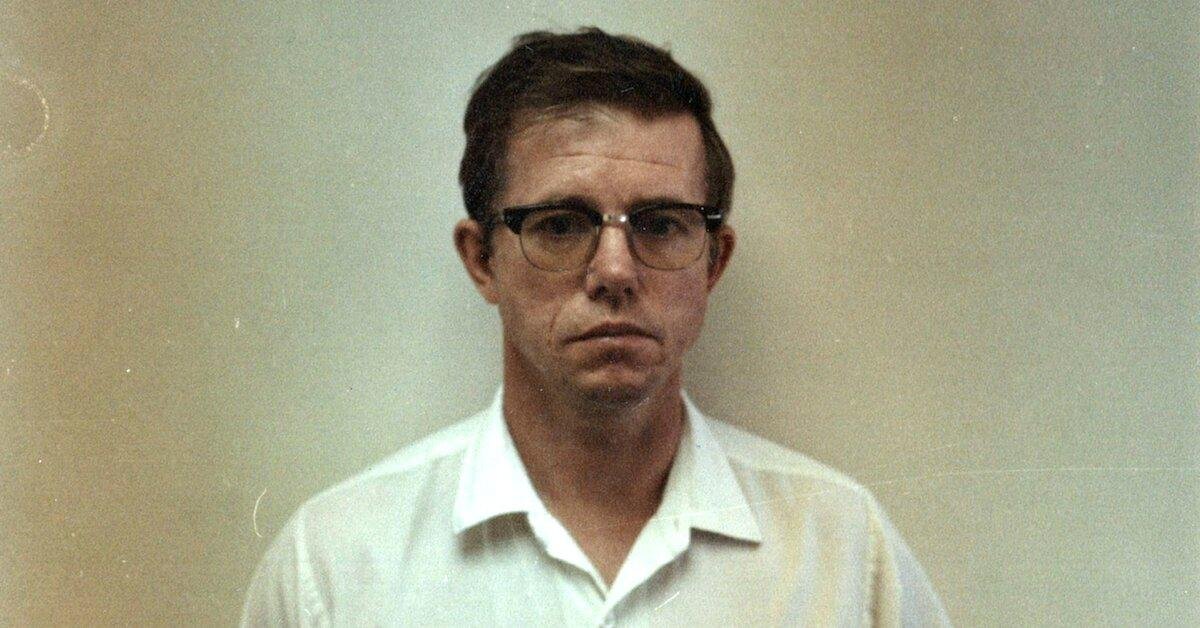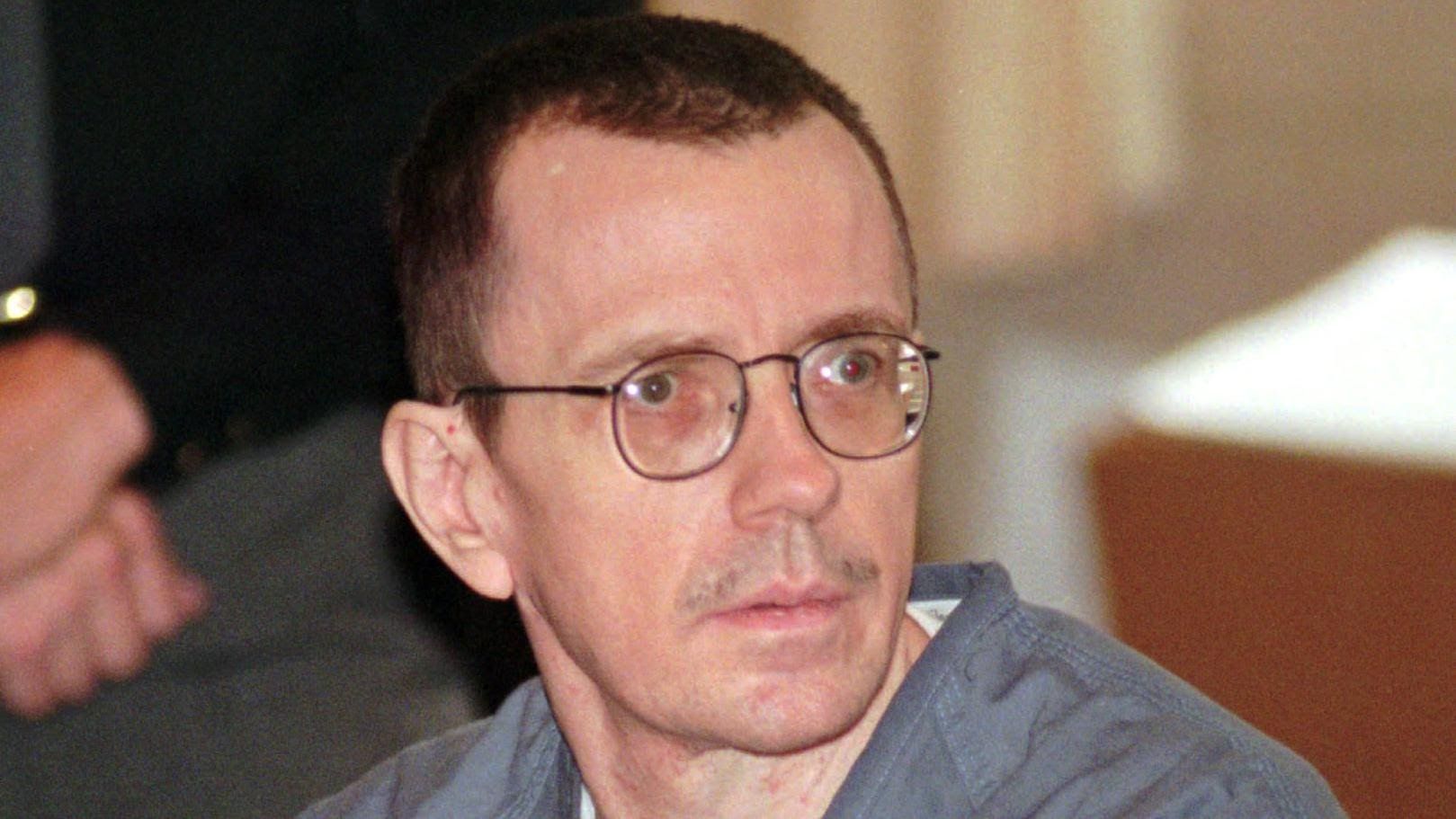Robert Hansen: The Butcher Baker – Unmasking Alaska's Most Feared Killer
The chilling tale of Robert Hansen, infamously known as "The Butcher Baker," casts a long, dark shadow over Alaska's history. Between 1972 and 1983, this seemingly ordinary family man unleashed a reign of terror, abducting, raping, and murdering at least 17 women in the vast, unforgiving Alaskan wilderness. His crimes, meticulously planned and executed, left a community gripped by fear and law enforcement baffled for years. This article delves into the life, crimes, and eventual downfall of one of America's most notorious serial killers, exploring the psychological depths of a man who hid a monstrous secret behind a facade of normalcy.
The story of Robert Hansen is not just a true crime narrative; it's a stark reminder of how evil can lurk in plain sight, even in the most picturesque settings. His double life as a respected bakery owner and a ruthless predator highlights the deceptive nature of appearances, challenging our perceptions of who a killer might be. From his troubled childhood to his final days in prison, we unravel the complex layers of a man whose actions forever scarred the landscape of Anchorage and the lives of countless families.
Table of Contents
Robert Hansen: A Biographical Overview
Before delving into the horrific details of his crimes, it's essential to establish the identity of the man at the center of this grim narrative. It's important to clarify that this article focuses exclusively on Robert Christian Hansen, the serial killer known as "The Butcher Baker," and not Robert Philip Hanssen, the notorious FBI agent convicted of espionage. While both men share a similar surname and have left indelible marks on American history, their crimes and contexts are entirely distinct. Our focus remains on the man who terrorized Alaska.
- Lake Of The Torches Casino
- Erin And Bens Relationship
- Karoline Leavitt The Fappening
- Amanda Bearse
- Holy City Brewing
Robert Christian Hansen: Personal Data & Biodata
| Attribute | Detail |
|---|---|
| Full Name | Robert Christian Hansen |
| Nickname(s) | The Butcher Baker |
| Born | February 15, 1939, Estherville, Iowa, USA |
| Died | August 21, 2014 (aged 75), Anchorage, Alaska, USA |
| Cause of Death | Natural causes (complications from an illness) |
| Victims (Confirmed) | At least 17 women |
| Period of Activity | Circa 1972 – 1983 |
| Location of Crimes | Anchorage, Alaska, and surrounding wilderness |
| Conviction | Kidnapping, Rape, Murder |
| Sentence | 461 years in prison |
| Occupation | Bakery owner (prior to arrest) |
| Status | Deceased (died in prison) |
The Early Life of a Future Predator
Born on February 15, 1939, in Estherville, Iowa, Robert Hansen's childhood was far from idyllic. He was described as a small and sickly child, plagued by perpetual acne and a severe stutter. These physical and speech impediments made him an easy target for bullying, not only from his peers but also from his strict, domineering father. This early environment fostered a sense of isolation and resentment within him. He spent much of his early life as a loner, struggling to connect with others and often retreating into himself.
This formative period is often scrutinized by criminologists attempting to understand the origins of such profound deviance. While a difficult childhood does not predetermine a path to serial murder, the patterns of bullying and a lack of healthy emotional development can contribute to the formation of a deeply disturbed psyche. Robert Hansen's inability to form meaningful relationships and his internalized anger likely laid the groundwork for the violent fantasies that would later manifest in his horrific crimes. After moving to Alaska in 1967, he appeared to establish himself as a seemingly upstanding family man and successful local baker, a stark contrast to the troubled youth he once was, and an even greater contrast to the monster he would become.
The Butcher Baker's Reign of Terror
The 1970s and early 1980s were a period of significant growth and change for Anchorage, Alaska, largely fueled by the construction boom of the Trans-Alaska Pipeline. This influx of transient workers and a booming economy created a unique environment, one that Robert Hansen exploited to its fullest. While he owned and operated a successful bakery in Anchorage, selling donuts and danishes to everyone in town, he was simultaneously orchestrating a horrifying double life. He gained the chilling nickname "The Butcher Baker" for his dual existence: a seemingly innocuous baker by day, and a ruthless hunter of women by night.
- Mary Trump Reveals Uncles Religious Exploitation
- Evelyn Keyes
- Konerak Sinthasomphone Death
- Debra Caprioglio
- Corey Stoll
His crimes began around 1972 and continued until his arrest in 1983. During this period, Robert Hansen abducted, raped, and murdered at least 17 women. The exact number of his victims remains a subject of some debate, with estimates ranging between 17 and 21, but 17 are officially confirmed. The sheer audacity and brutality of his methods shocked the nation once they came to light, painting a picture of a predator who saw human lives as mere game.
Modus Operandi: A Hunter's Game
Robert Hansen's method of operation was as unique as it was depraved. He didn't just murder his victims; he hunted them. His preferred targets were vulnerable women, often prostitutes or exotic dancers, whom he would lure under the pretense of paying for sex. Once he had them isolated, he would abduct them, often taking them to his home where he would tie them up and sexually assault them. But the horror didn't end there.
Hansen owned a private plane, which he used to fly his victims into the remote, desolate Alaskan wilderness, particularly around the Knik River area. This was his hunting ground. He would release the women, sometimes naked or partially clothed, and then pursue them with a rifle, hunting them down like wild game. He would then bring their bodies back, often burying them in shallow graves or leaving them exposed to the elements. He even kept a map in his home where he would mark the locations of his victims, crossing them off once they were "dealt with." This chilling detail highlights the sadistic pleasure he derived from his monstrous sport, treating human lives as trophies in a twisted game.
The Victims Remembered
Each of Robert Hansen's victims was a life tragically cut short, a person with a family, dreams, and a future. While many of his victims were marginalized individuals, often overlooked by society, their lives mattered. One such victim was Robin Pelkey, born in 1963. She was one of Hansen's 17 known victims. For years, her remains were unidentified, a testament to the remote and brutal nature of Hansen's disposal methods. However, thanks to advancements in forensic science, particularly genetic genealogy, her remains were eventually identified. This breakthrough allowed authorities to contact her relatives in Arkansas, bringing some measure of closure to a family that had endured decades of uncertainty. The identification of victims like Robin Pelkey underscores the enduring impact of Hansen's crimes and the tireless efforts of investigators to bring justice to those he silenced.
The list of confirmed victims includes:
- Lisa Futrell (1971)
- Malai Larsen (1972)
- Roxanne Easland (1973)
- Joanne Messina (1973)
- Eklutna Annie (unidentified, remains found near Eklutna Lake)
- Andrea Altiery (1974)
- Sherry Morrow (1974)
- Debbie Duel (1974)
- Sue Luna (1975)
- Tami Pederson (1975)
- Angela Feddern (1975)
- Theresa Hulse (1976)
- Mary Thill (1976)
- Robin Pelkey (1980)
- Paula Goulding (1982)
- Angela Feddern (1982) - *Note: She was initially listed as a victim in 1975, but her remains were found in 1982 and confirmed as a Hansen victim. Some sources list her twice, others just once based on discovery date.*
- Delores Feddern (1983)
This list is a stark reminder of the human cost of his depravity, highlighting the diverse backgrounds of the women he targeted and the widespread fear he instilled.
The Investigation: A Puzzle of Missing Women
For years, Robert Hansen operated undetected, a phantom menace in the vast Alaskan landscape. On the surface, there was nothing that raised red flags about him. The unassuming Anchorage native was married with children and was the successful owner of a bakery. He was a seemingly upstanding member of the community, a master of deception. This facade allowed him to continue his heinous crimes for over a decade, as law enforcement struggled to connect the dots between the disappearances and murders of numerous women.
The victims often shared a common vulnerability: they were marginalized, making their disappearances less likely to attract immediate, high-profile attention. This factor, combined with the remote and vast areas where Hansen disposed of bodies, made the investigation incredibly challenging. Authorities were aware of a pattern of missing women, particularly those involved in prostitution or exotic dancing, but linking these cases to a single perpetrator proved elusive. The wilderness itself became Hansen's accomplice, swallowing up evidence and making recovery efforts incredibly difficult. The lack of concrete leads and the sheer scale of the Alaskan terrain allowed Robert Hansen to evade capture for far too long, leaving a trail of unanswered questions and grieving families.
A Survivor's Bravery and the Breakthrough
The tide began to turn against Robert Hansen not through forensic evidence initially, but through the incredible bravery of a young woman named Cindy Paulson. In 1983, Paulson, a sex worker, survived an attack by a man who had paid her for sex and instead abducted her, tied her up in his home, and would have eventually killed her if she hadn't managed to escape. When the police walked into Cindy Paulson's motel room at Big Timber, she was shaking and hysterical, trying to remove the handcuffs digging into her wrists. Her account was terrifyingly detailed: she described being taken by a man, driven to his home, and then flown in his private plane to a remote cabin where he sexually assaulted her and planned to hunt her.
Despite her initial credibility issues due to her profession, Paulson's detailed and consistent testimony, along with her physical injuries and the presence of handcuffs, could not be ignored. She provided a description of her attacker and his vehicle, which led investigators to Robert Hansen. This was the crucial breakthrough. While law enforcement had previously struggled to connect the disparate cases of missing women, Paulson's harrowing escape and willingness to come forward provided the first direct link to the Butcher Baker. Her courage was instrumental in finally exposing the monster hiding in plain sight and initiating the sequence of events that would lead to Hansen's arrest and the end of his reign of terror.
Arrest, Confession, and Conviction
Following Cindy Paulson's escape and detailed account, law enforcement, particularly the FBI and the Alaska State Troopers, began to focus intensely on Robert Hansen. Despite his outwardly respectable image, the pieces of the puzzle began to fit. Investigators obtained a search warrant for his home and bakery, where they uncovered a trove of incriminating evidence. This included weapons, jewelry belonging to his victims, and perhaps most chillingly, the map on which he had marked the locations where he had disposed of the bodies of the women he had hunted. The discovery of this map provided irrefutable proof of his horrifying double life and his systematic approach to murder.
He was arrested in 1983. Faced with overwhelming evidence, Robert Hansen eventually confessed to killing 17 women in the Alaskan wilderness in a most heinous way. His confession, a chilling account of his sadistic rituals, confirmed the worst fears of the community and provided answers to many long-standing missing persons cases. In a plea bargain that spared him the death penalty, Hansen pleaded guilty to four counts of murder and kidnapping. He was sentenced to 461 years in prison, a term designed to ensure he would never again walk free. This conviction brought a sense of closure, albeit a painful one, to the families of his victims and to the community that had lived under the shadow of the Butcher Baker for so long.
Life in Prison and Death
After his conviction, Robert Hansen was sent to the Spring Creek Correctional Center in Seward, Alaska, one of the state's most secure facilities. He spent the remainder of his life behind bars, serving his extraordinary sentence of 461 years. Despite the horrific nature of his crimes and the public's desire for him to suffer, his time in prison was largely uneventful. He became just another inmate, stripped of the power and control he so meticulously wielded over his victims.
Robert Christian Hansen died in prison on August 21, 2014, at the age of 75. His death was attributed to natural causes, specifically complications from an illness, likely heart-related, at the Alaska Regional Hospital in Anchorage. He had been transferred from the correctional facility for medical treatment. His passing marked the final chapter in the life of one of America's most infamous serial killers. While his death brought an end to his physical presence, the memory of his crimes and the suffering he inflicted continue to resonate, serving as a grim reminder of the darkness that can reside within seemingly ordinary individuals.
The Legacy of Robert Hansen
The case of Robert Hansen, the Butcher Baker, left an indelible mark on Alaska and the field of criminal justice. His crimes, characterized by their unique and sadistic nature, forced a re-evaluation of how law enforcement approaches serial killer investigations, particularly when victims are marginalized. The story of Robert Hansen continues to captivate and horrify, serving as a subject for numerous books, documentaries, and films, including the 2013 movie "The Frozen Ground," which brought his terrifying saga to a wider audience. His legacy is not one of notoriety, but rather a chilling cautionary tale about the banality of evil and the importance of vigilance.
Lessons Learned from a Dark Chapter
One of the most significant lessons from the Robert Hansen case is the importance of looking beyond surface appearances. "There was nothing on the surface that raised red flags about Robert Hansen," as the data indicates. This highlights how easily a dangerous individual can blend into society, maintaining a facade of normalcy while harboring dark secrets. It underscores the need for thorough investigation and a willingness to consider the unthinkable, even when a suspect seems above reproach. Furthermore, the case highlighted the vulnerabilities of certain populations, particularly sex workers, who are often disproportionately targeted by predators and whose disappearances may not initially receive the same level of attention as others. It spurred discussions about protecting all members of society, regardless of their lifestyle.
The Impact on Alaskan Justice
The Robert Hansen case profoundly impacted law enforcement procedures in Alaska. It emphasized the critical need for inter-agency cooperation, improved data sharing, and more systematic approaches to investigating missing persons cases, especially those with similar patterns. The bravery of Cindy Paulson also underscored the vital role that survivors play in bringing perpetrators to justice and the importance of believing and supporting victims, regardless of their background. The enduring efforts to identify all of Hansen's victims, such as the use of genetic genealogy to identify Robin Pelkey, demonstrate a continued commitment to providing closure and honoring the memory of those who were lost. The legacy of Robert Hansen is a somber reminder of the darkness that can exist, but also a testament to the resilience of victims and the tireless dedication of those who seek justice.
Conclusion
Robert Christian Hansen, "The Butcher Baker," remains one of the most chilling figures in American true crime history. His ability to maintain a veneer of respectability while committing unspeakable acts of violence serves as a stark reminder that evil often hides in plain sight. His reign of terror, which saw him abduct, rape, and murder at least 17 women in the Alaskan wilderness, forever scarred the landscape and the collective consciousness of a community. From his troubled childhood to his calculated hunting expeditions, Hansen embodied a unique and terrifying brand of depravity.
The eventual unraveling of his crimes, largely thanks to the courage of a survivor and the diligent work of law enforcement, brought an end to his horrifying spree and provided some measure of justice for his victims and their families. Though Robert Hansen died in prison in 2014, the lessons learned from his case continue to inform and shape our understanding of serial predation, the importance of victim advocacy, and the relentless pursuit of truth. His story stands as a powerful testament to the enduring impact of crime and the unwavering human spirit in the face of unimaginable horror. What are your thoughts on how such a seemingly ordinary man could commit such extraordinary evil? Share your insights in the comments below, and consider exploring other true crime narratives on our site to delve deeper into the complexities of human behavior.



Detail Author:
- Name : Loyal Wilderman
- Username : margarett80
- Email : derrick73@johnston.org
- Birthdate : 2002-02-09
- Address : 638 Wilderman Path East Rex, MI 55567-5552
- Phone : +1.814.340.8340
- Company : Braun, Hane and Prohaska
- Job : Hoist and Winch Operator
- Bio : Vitae voluptates vel dolore doloremque corporis eaque. Sunt praesentium voluptatum minima consequuntur vitae.
Socials
tiktok:
- url : https://tiktok.com/@nanniekuvalis
- username : nanniekuvalis
- bio : Eaque repellendus ipsa et pariatur sunt fugiat.
- followers : 2935
- following : 208
twitter:
- url : https://twitter.com/nannie8437
- username : nannie8437
- bio : Enim veritatis eaque id occaecati sit tenetur. Beatae ut et expedita et quia cumque. Ut dolorem optio maiores aspernatur. Laboriosam sed maxime ut occaecati.
- followers : 6825
- following : 2225
facebook:
- url : https://facebook.com/nanniekuvalis
- username : nanniekuvalis
- bio : Adipisci similique ratione minima eveniet odio atque. Quod quia ut est.
- followers : 621
- following : 1699